When you think of a donkey, you probably have a particular image that comes to mind. It might surprise you to learn that there are a variety of donkeys that come from many parts of the world—all different sizes, colors, and used for various purposes.
We have rounded up 14 donkeys, along with a little history and information behind the breeds. Some you may have heard of, and others you might be learning about for the first time.
Click to Skip Ahead:

The 14 Types of Donkey Breeds
1. Baudet du Poitou Donkey

| Size: | 53–68 inches |
| Colors: | Dark bay |
| Temperament: | Docile, social, adaptable |
| Purpose: | Breeding, utility |
The Baudet du Poitou is a very large, unique donkey native to France. Once you recognize the breed, you can point it out in a crowd. These donkeys have long, unmaintained coats that show a dreaded or corded appearance.
While uncommon in many places globally, they still thrive in their native lands. These donkeys have been used to create many other breeds we will discuss on this list, as they were imported to the United States during the early 1900s.
These donkeys were explicitly designed for breeding. However, they can carry out work tasks in agriculture or riding.
2. American Mammoth Jackstock
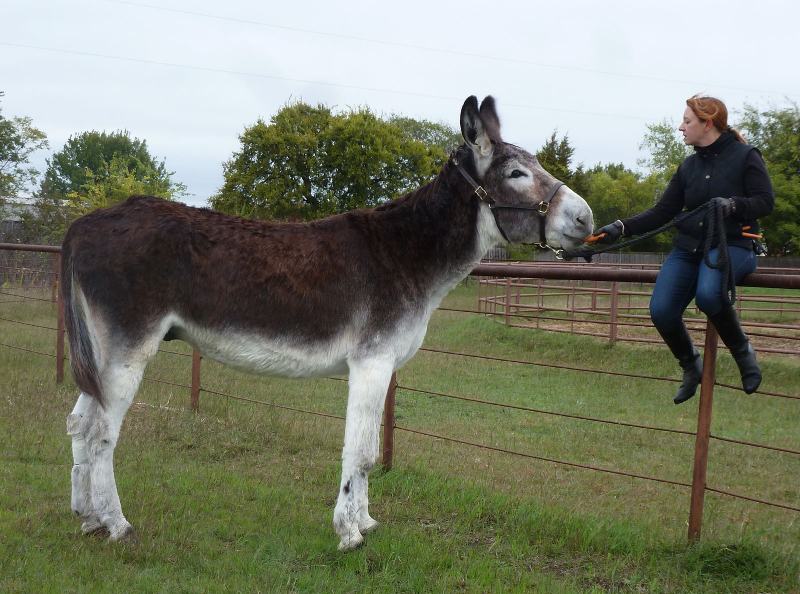
| Size: | 56–58 inches |
| Colors: | Gray, black |
| Temperament: | Docile, easy to handle, steady |
| Purpose: | Utility |
The American Mammoth has a name that contributes to its overall looks and origin. These large donkeys were created in North America. They were bred specifically for work, combined with the Baudet du Poitou, Maltese, Andalusian, Majorera, and Catalan influences.
Due to their hardiness and size, they make excellent animals in impoverished and harsh territories where horses don’t thrive. They make very exceptional workers, and their size helps their overall capabilities.
These donkeys make excellent pets and easy riders—they don’t spook easily like some.
3. Martina Franca Donkey

| Size: | 53–60 inches |
| Colors: | Dark bay |
| Temperament: | Patient, slow-going |
| Purpose: | Meat, milk, light utility |
The Martina Franca is an Italian donkey breed from Puglia in Southern Italy. It is the largest breed of donkey, and it has been used for centuries to produce quality mules. The most famous is the well-known Mulo Martin, translating to “mule of Martina Franca.”
This particular donkey was used in light draft work. But it also has roots in beast of burden, meat, and milk. So they’re highly versatile donkeys that certainly benefit their keepers.
4. Andalusian Donkey
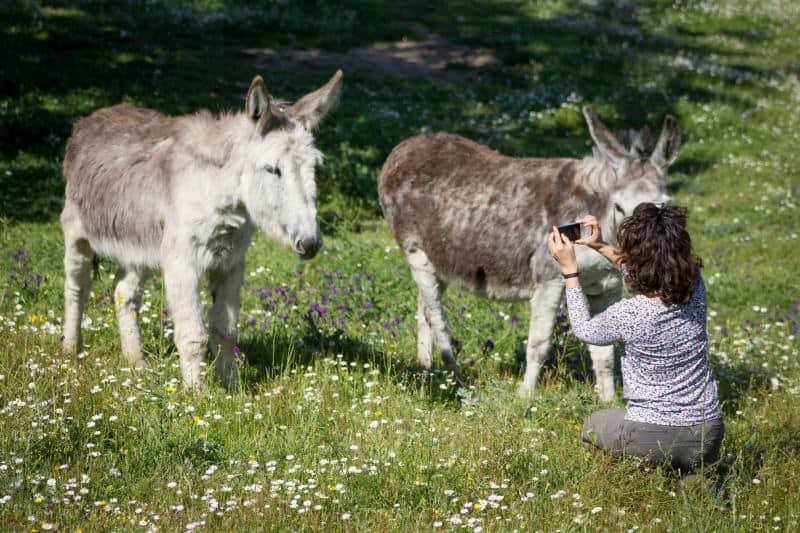
| Size: | 59–63 inches |
| Colors: | Pale |
| Temperament: | Docile, calm |
| Purpose: | Transport |
The Andalusian Donkey has a rich history. It was the most prized breed of the 18th century in Spain! It was so adored the Spanish crown would not even let them exit the country.
It’s a very large donkey with a soft coat. The Andalusian is a very pale gray color, sometimes almost white.
Today, the donkey is critically endangered. At the end of 2013, the population status was reported to be roughly 749, all of which were in their native land.
5. Catalan Donkey
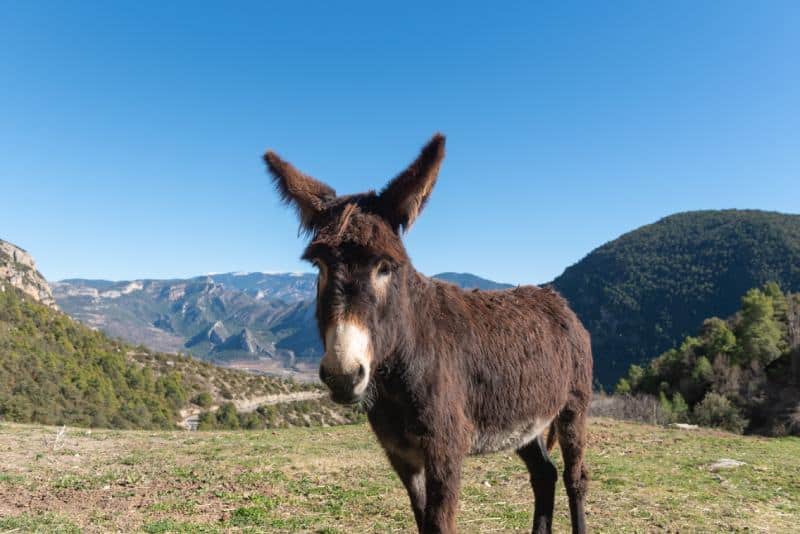
| Size: | 52–56 inches |
| Colors: | Gray-dun, sorrel, white, spotted |
| Temperament: | Stubborn, hard-working |
| Purpose: | Sire |
The lovely Catalan donkey has really sparked the model for what donkeys look like. These classic donkeys have long ears, white muzzles, and friendly features.
This breed was prevalent in the 19th century—having over 50,000 across Catalunya. However, things really took a turn somewhere along the way. Crazily enough, these donkeys were almost completely extinct just a few years ago!
While numbers have risen again to roughly 400, these burros still remain highly at risk. They have luck on their side, though. The Associació per al Foment de la Raca Asinina Catalana (or AFRAC for short) and the Rucs del Corredor Association are working to increase the numbers.
6. Grand Noir du Berry
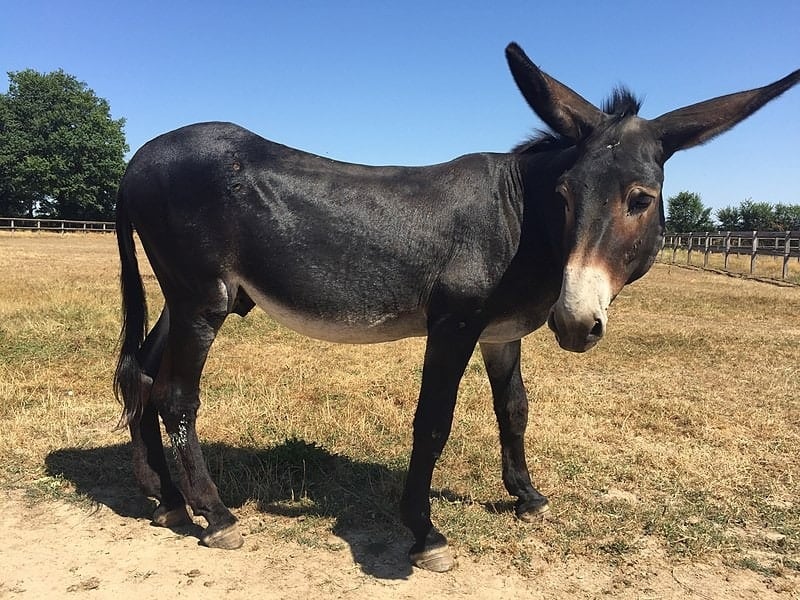
| Size: | 13–57 inches |
| Colors: | Bay brown, dark bay brown, black |
| Temperament: | Docile, calm |
| Purpose: | Agricultural work |
The Grand Noir du Berry it’s a very popular donkey but one of unknown origins. There are several different speculations as to how these donkeys came to be. It seems that they were influenced by imported donkeys from Algeria in the 1850s. They are also descendants of the Catalan donkeys.
The Grand Noir du Berry is often used for agricultural work periods. These donkeys are calm and easy to work with extra experience in vineyards. However, they can accomplish a variety of tasks to help out.
Typically today, these donkeys are used as riders for tourism.
7. Asinara Donkey
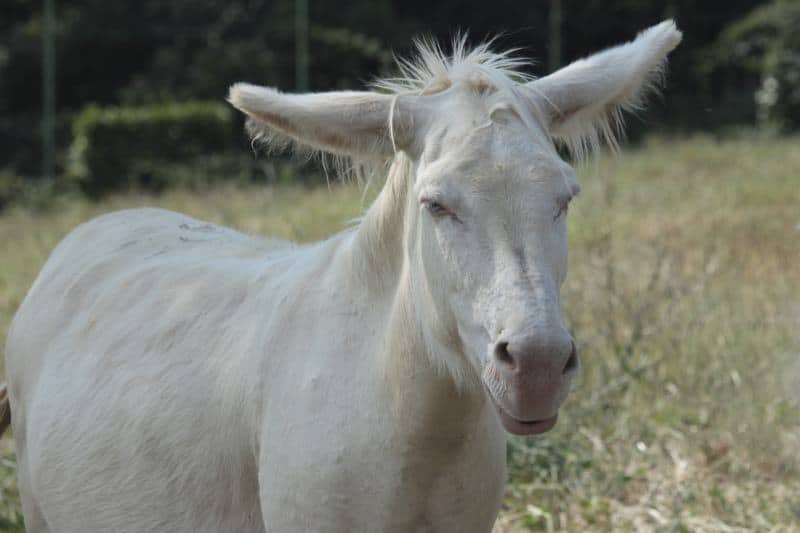
| Size: | 30–60 inches |
| Colors: | White |
| Temperament: | Shy, timid, aloof |
| Purpose: | Cultural and environmental heritage |
The Asinara donkey is a feral donkey indigenous to the island of Asinara. It is a highly unique breed that has one thing setting it apart from the rest—it’s almost entirely albinistic. Although some carry a gray hue instead.
So, not only can you see these beauties roaming freely, but they also have a one-of-a-kind mutation. The donkeys naturally reduce the brush and vegetation responsible for some wildfires—so they are especially good to have around!
Today there are approximately 120 donkeys on the island. They are protected in National Park lands to preserve their numbers.
8. Provence Donkey
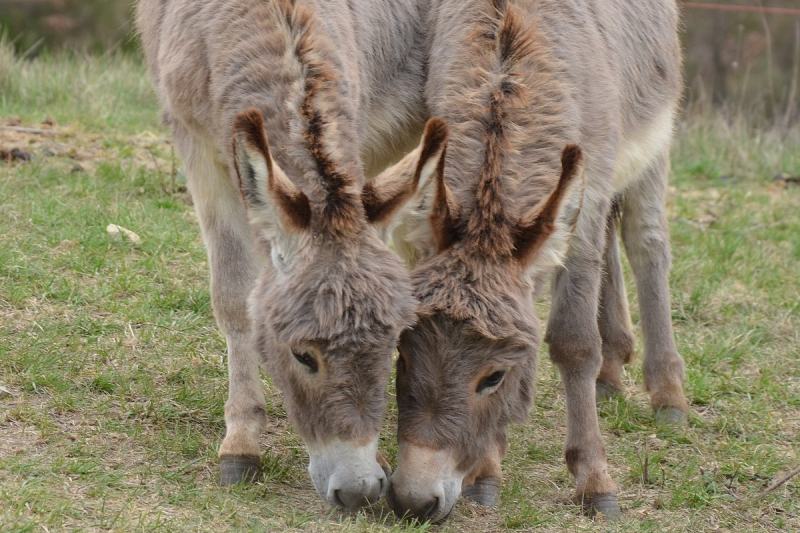
| Size: | 47–53 inches |
| Colors: | Dove gray |
| Temperament: | Calm, patient |
| Purpose: | Transhumance, riding |
The Provence donkey was used by shepherds in Provence, France during the 15th century. They frequently helped during the seasonal sheep transhumance between lower ground and alpine pastures.
That wasn’t all, though! These donkeys have helped humans by carrying equipment and supplies and riding. The breed numbers declined drastically once the need for this dwindled in the 20th century. By 1993, only 330 Provence donkeys could be identified.
However, folks came around to save the breed with several different associations. Now, the current population is estimated to be around 1500 in total. So the numbers have really revamped since their near extinction!
9. Amiatina Donkey
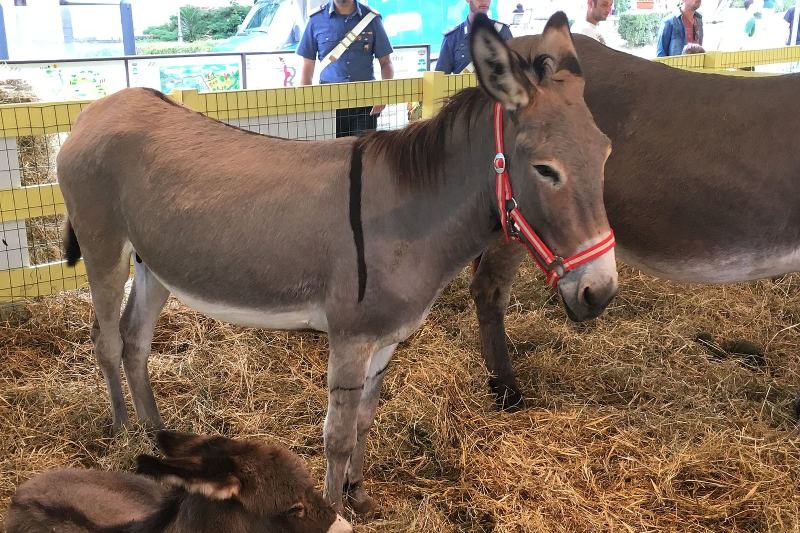
| Size: | 45–53 inches |
| Colors: | Mouse gray |
| Temperament: | Neurotic, good-natured |
| Purpose: | Transport, meat, light draught |
The Amiatina donkey was a very popular breed in the earliest part of the 20th century. However, like many other animals and breeds, their numbers significantly declined after the Second World War. Luckily breeder’s registrations banded together to up the numbers again.
This type of donkey is considered an intermediate size, falling right smack dab in the middle. They are beautifully defined as mouse gray with primitive markings. This powerful and rugged breed can forage and thrive in virtually any terrain.
These donkeys are generally for transport, meat, and even light work.
10. Zamorano-Leonés Donkey
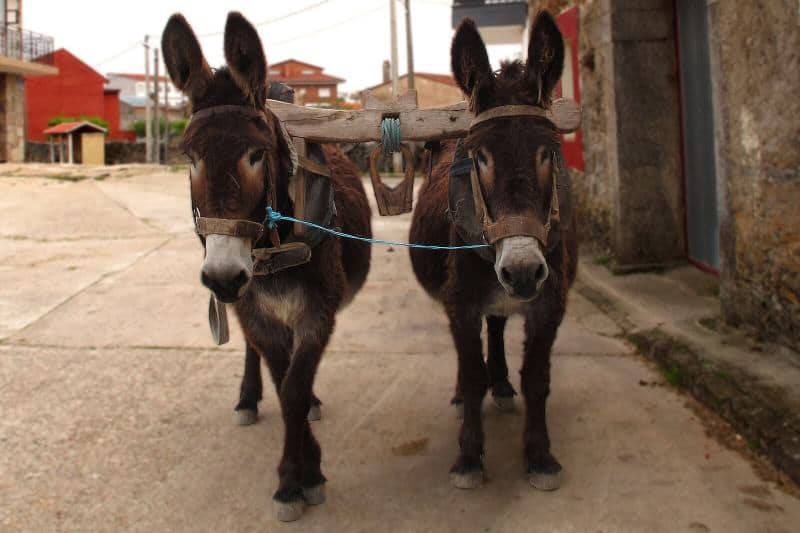
| Size: | 43–57 inches |
| Colors: | Black, dark bay |
| Temperament: | Lively, adaptable |
| Purpose: | Beasts of burden |
The Zamorano-Leonés donkey came from the province of Zamora in the 15th century. It was a significant influence in forming many other donkey breeds. It is even rumored that in the 18th century, it was used to create the French breed we discussed earlier—the furry Baudet de Poitou.
This particular donkey is incredibly large with a broad, massive head. You might recognize the shaggy fur, helping it keep warm even in unfavorable temperatures. These donkeys were often used to create mules for agricultural purposes.
Primarily beasts of burden, these donkeys still exist today in small numbers.
11. Pyrenean Donkey
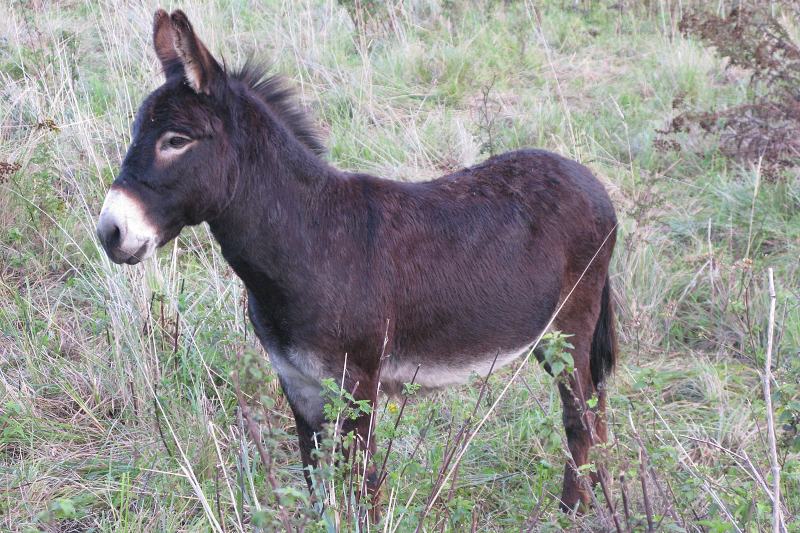
| Size: | 50–53 inches |
| Colors: | Shiny black, uneven black, bay black, chestnut bay |
| Temperament: | Calm, kind |
| Purpose: | Riding, transport, pack |
The Pyrenean donkey is incredibly versatile, coming from Southwestern France. It is also referred to as the “Gascon” donkey—perfectly sized for the terrain and work needs of the region.
The Pyrenean donkey is still quite useful today! Its calm, docile temperament and outstanding patience makes them excellent checking companions for children and adults alike. They also make excellent pack animals, carrying a decent amount of weight for 6 to 8 hours.
These donkeys are still quite prevalent worldwide—for pets, work, shows, and more!
12. Majorera Donkey
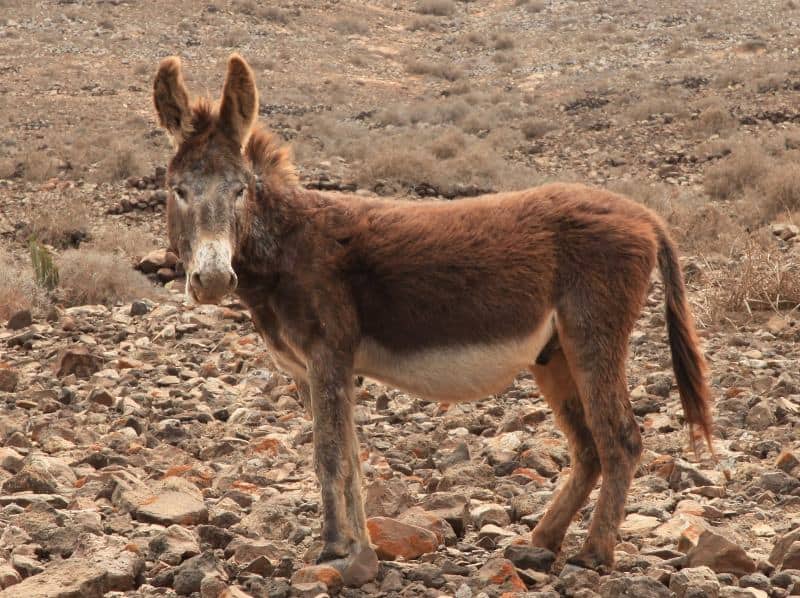
| Size: | 39–47 inches |
| Colors: | Light brown, black |
| Temperament: | Calm, gentle |
| Purpose: | Agricultural work, riding, light draught, pack animal |
An African breed, the Majorera donkey is an indigenous breed to the Canary Islands off the coast of southern Morocco. Today, it is present in all six municipalities of the island. These special donkeys are under the strict protection of the government and are thought to be endangered.
This breed is incredibly well adapted to its environment. On Canary Island, there is volcanic, semi-desert terrain and very high temperatures. Despite the challenging living conditions, they thrive and work well with the people on the island.
Often they are used for riding, agriculture work, and as a packing animal.
13. Cotentin Donkey
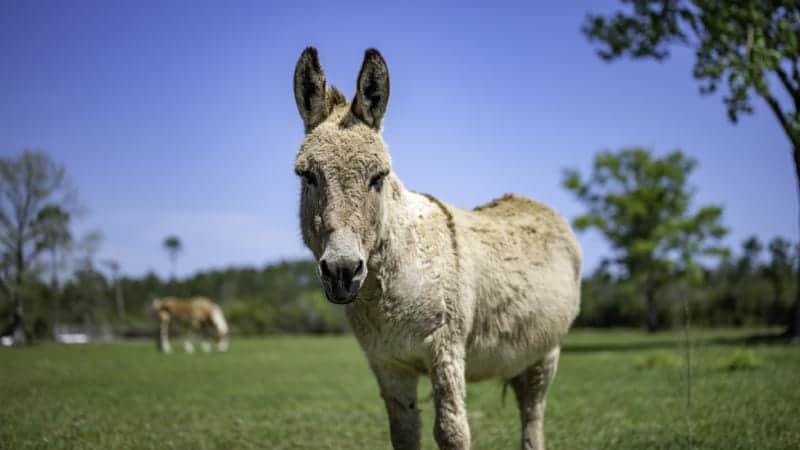
| Size: | 45–51 inches |
| Colors: | Dove gray |
| Temperament: | Sweet, docile |
| Purpose: | Trekking, driving |
The Cotentin donkey is from the Cotentin Peninsula in La Manche—the lower Normandy region of France. It is still popularly found in its native land today. Originally, these burros were bred to help with agricultural tasks but went nearly extinct thanks to wars and modern advancements.
Today, this donkey takes on a much different and arguably more fun role. It is uncommon to see these donkeys with tasks such as being a pack animal, acting as a companion, or even participating in therapy programs.
Thanks to their sweet demeanors, these donkeys also make great riding horses for young learners.
14. Norman Donkey
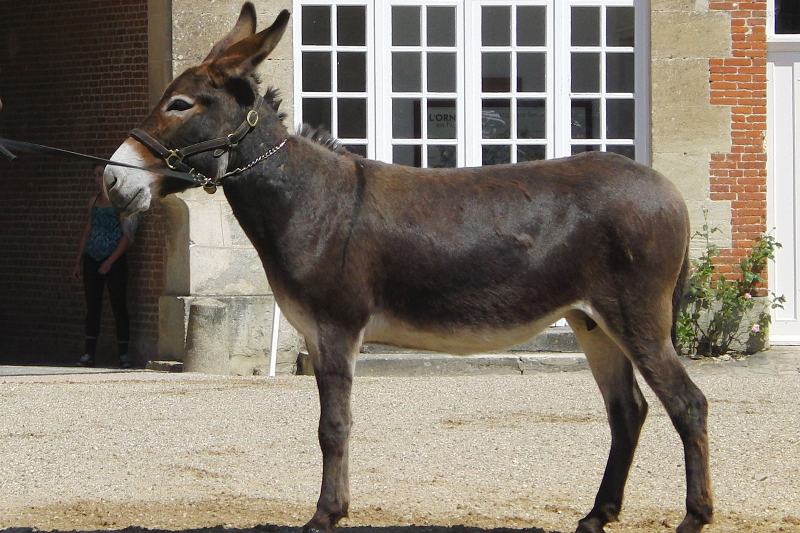
| Size: | 43–49 inches |
| Colors: | Chocolate brown, black pangeré |
| Temperament: | Sweet, docile |
| Purpose: | Trekking, driving |
The Norman Donkey originated in the lower part of Normandy in France. It was once used in the 19th century to tote garden goodies to locals, along with other agricultural duties. While their popularity and numbers decreased throughout the 90s, they are returning.
The Norman donkey is used for its strength and endurance. For being a smaller donkey, it certainly is mighty, able to carry weight successfully and through rugged terrain.
Today, it is often used for hiking or trekking—perfect for carrying small loads and some humans.

Purposes of Donkeys
Donkeys have several purposes in our lives, even still in the present day. In the past, they were mainly used for utility work, such as agriculture and toting goods.While they are still fantastic in these roles, here are several other jobs donkeys have acquired over the years!
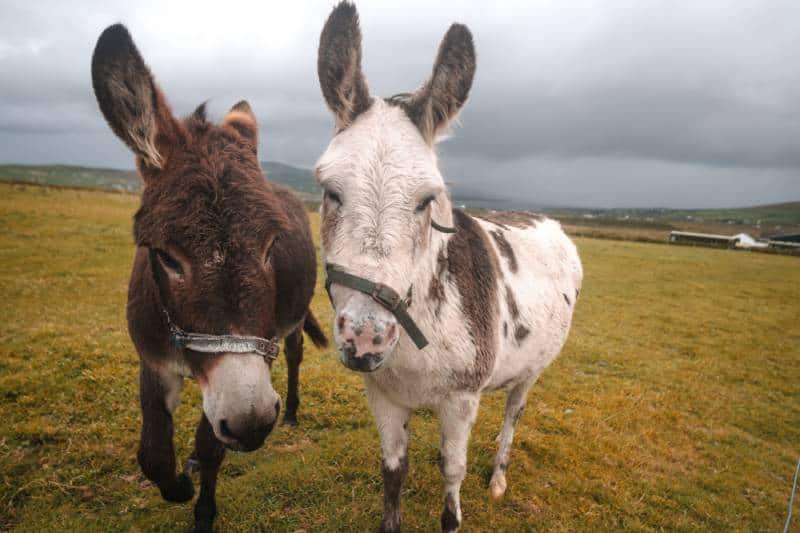
Companions
Most donkey breeds are very docile and calm, so they can make wonderful companion animals for various folks. Often, they are excellent with children due to their laid-back nature. You might be surprised just how quickly you become friends with your donkey!
Plough and Cart Pulling
This isn’t really a new line of duty for a donkey. For centuries, donkeys have shown their proficiency at pulling small carts and plows. This really helps on farms, especially in undeveloped parts of the world.
Transport
If you want to take some fresh farm-grown veggies to the market, your donkey can help you. Donkeys can carry quite a bit of weight, depending on their body size. They can really help take a load off, And they’re usually very good at traveling in all sorts of inclement weather and rough terrain.

Construction
Rather than using costly methods for powering small vehicles and construction, you can often use donkeys for the same purpose. Donkeys are excellent at navigating uneven, mountainous, and treacherous terrain. It’s more efficient, and it leaves less of a carbon footprint.
Refuse Collection
In some areas, you can use a donkey to clean up the trash around the area.
Riding
Donkeys have strong, sturdy bodies. They often make excellent riding animals because they are very sturdy, calm, and patient.

Tourism
What better way to tote tourists around than giving them a donkey ride? Donkeys are very suitable animals for the task and will happily plod along so visitors can see the sites.
Therapy
Due to a donkey’s calm temperament, many of them make excellent therapy animals for children and adults with emotional or physical disabilities. This interaction can promote excellent emotional fulfillment for people under professional guidance.

Conclusion
If you have a donkey, you can choose to use them for whatever tasks you wish. It’s so incredible to see all of the different breeds of donkeys spanning across the world. Some of them are still indigenous and feral, while others are purely the product of domestication.
If you’ve thought about getting a donkey on your farm as a helping hand or as a pet, know that most of them are very docile, patient, and hard-working. Which of these donkeys was your favorite?
